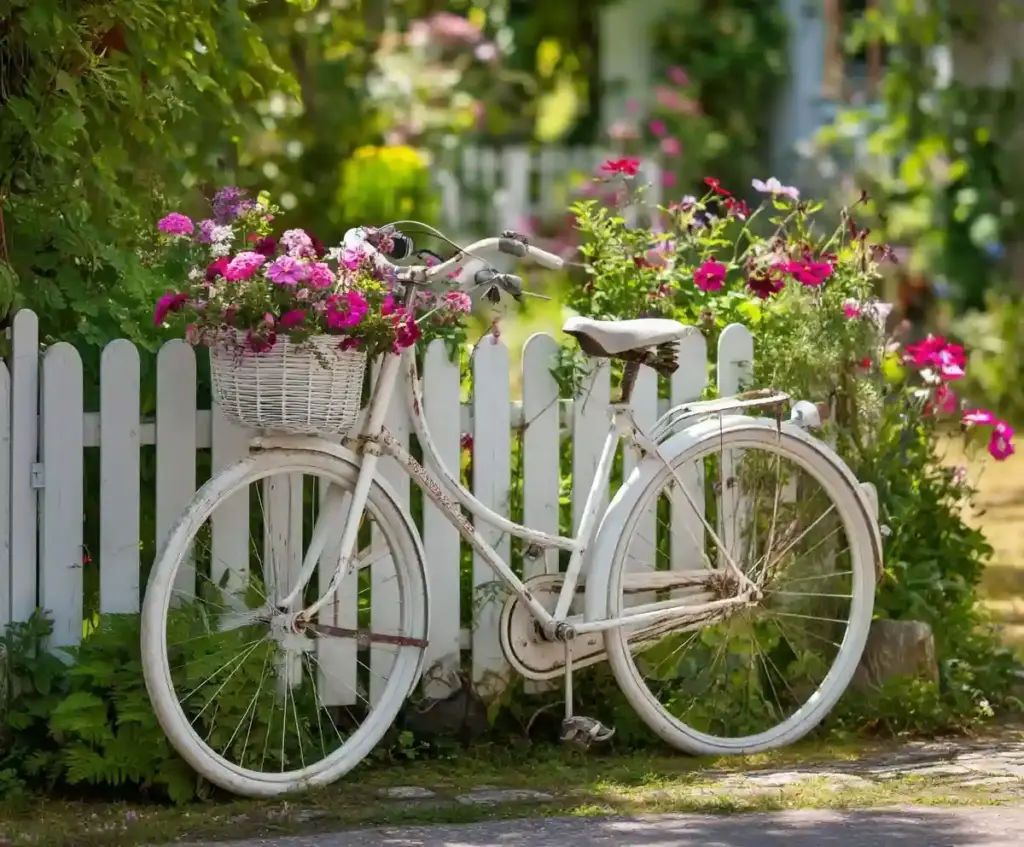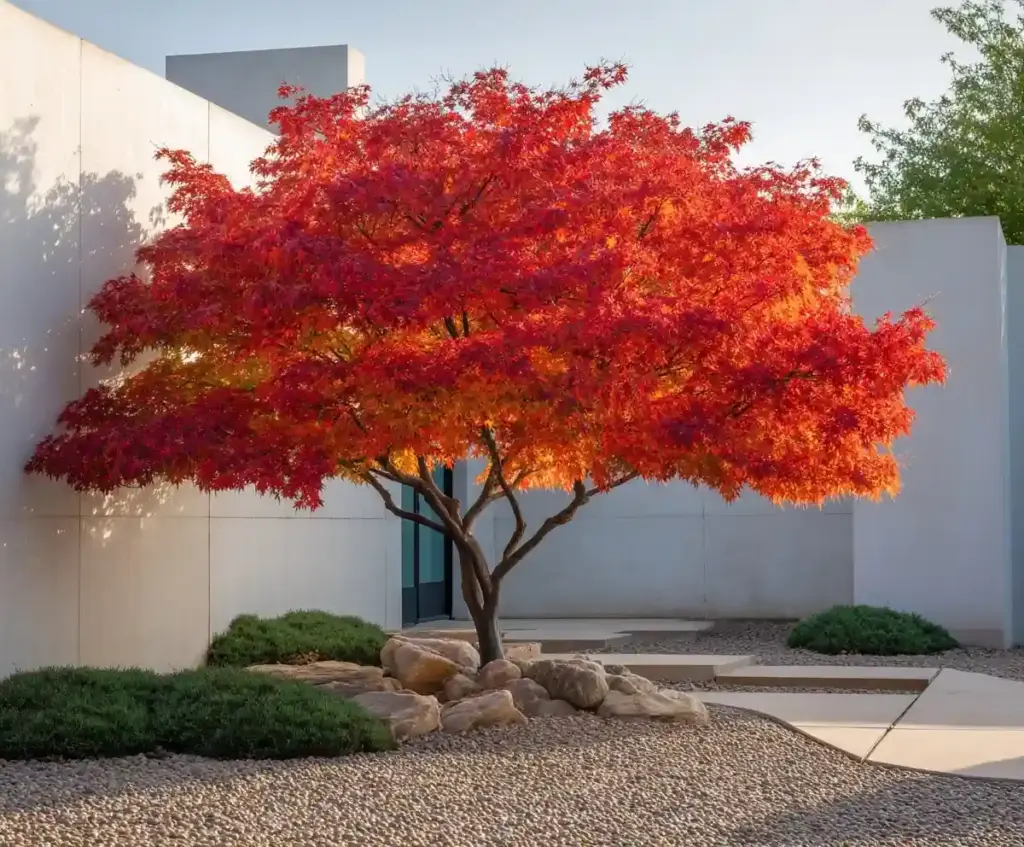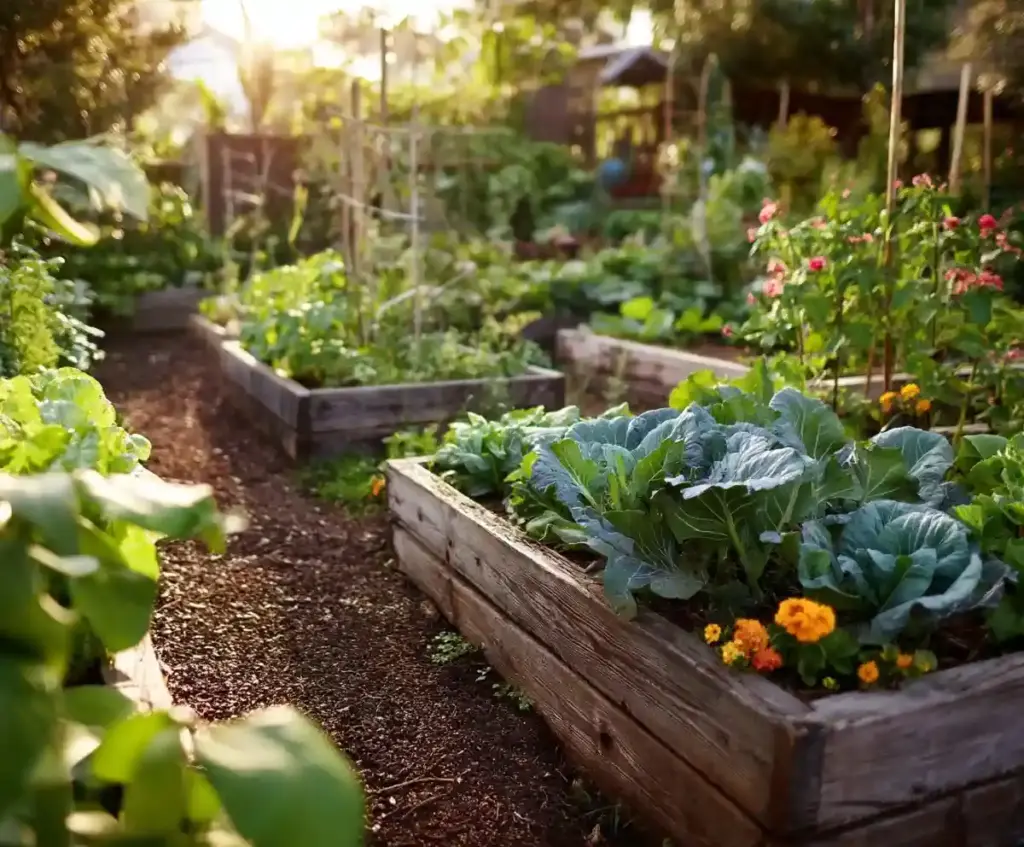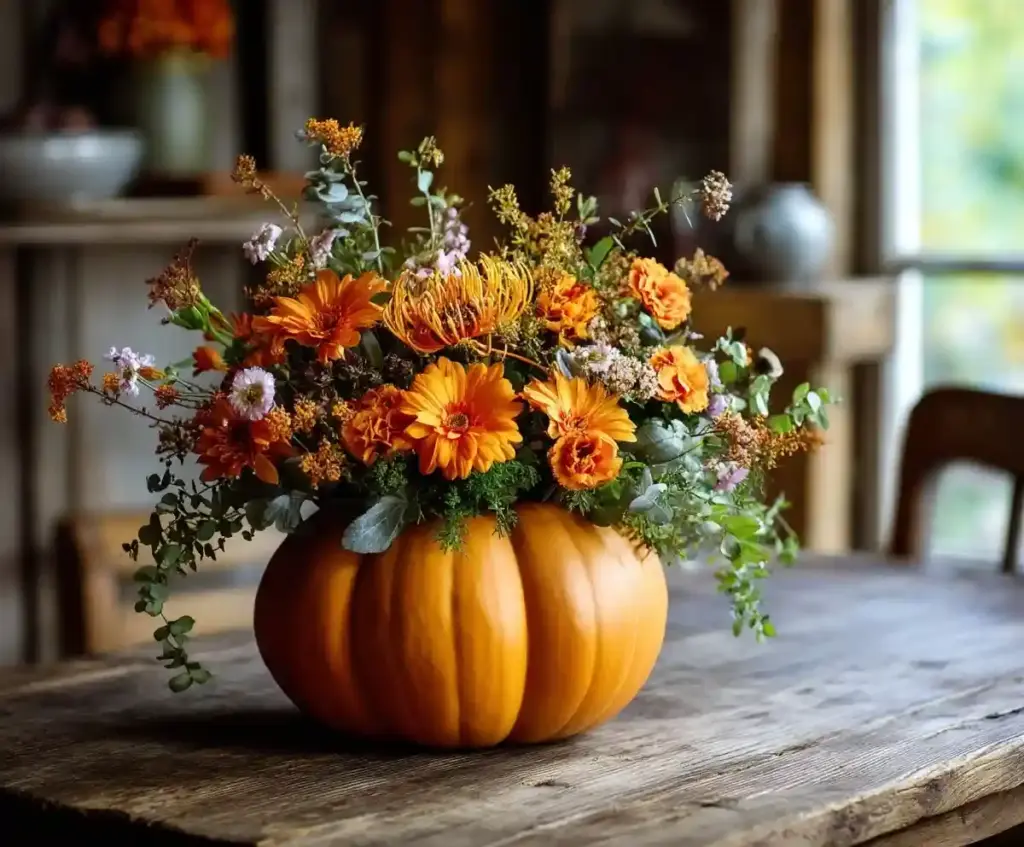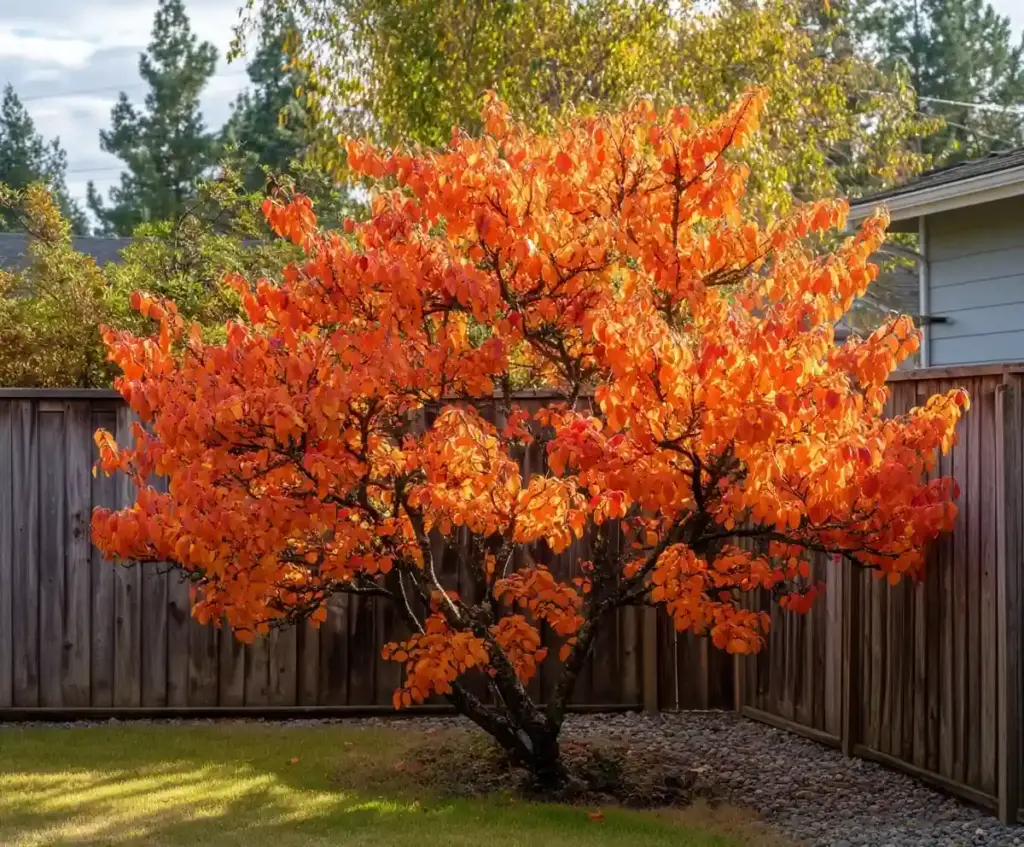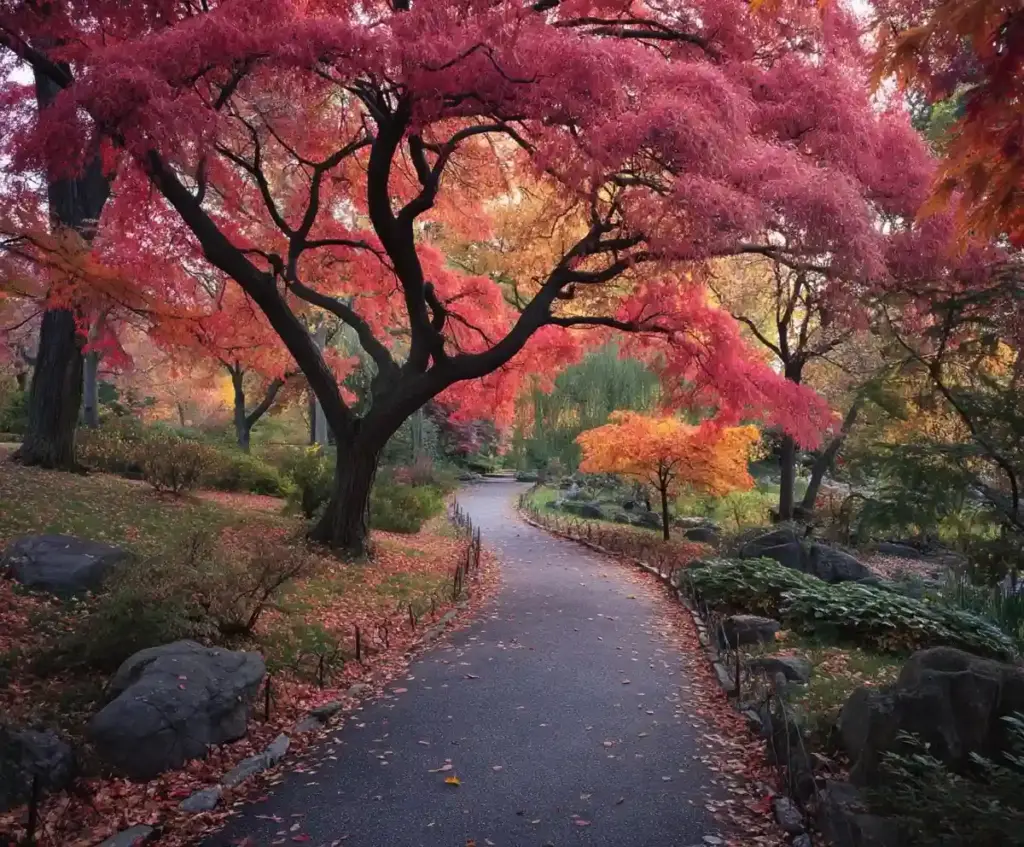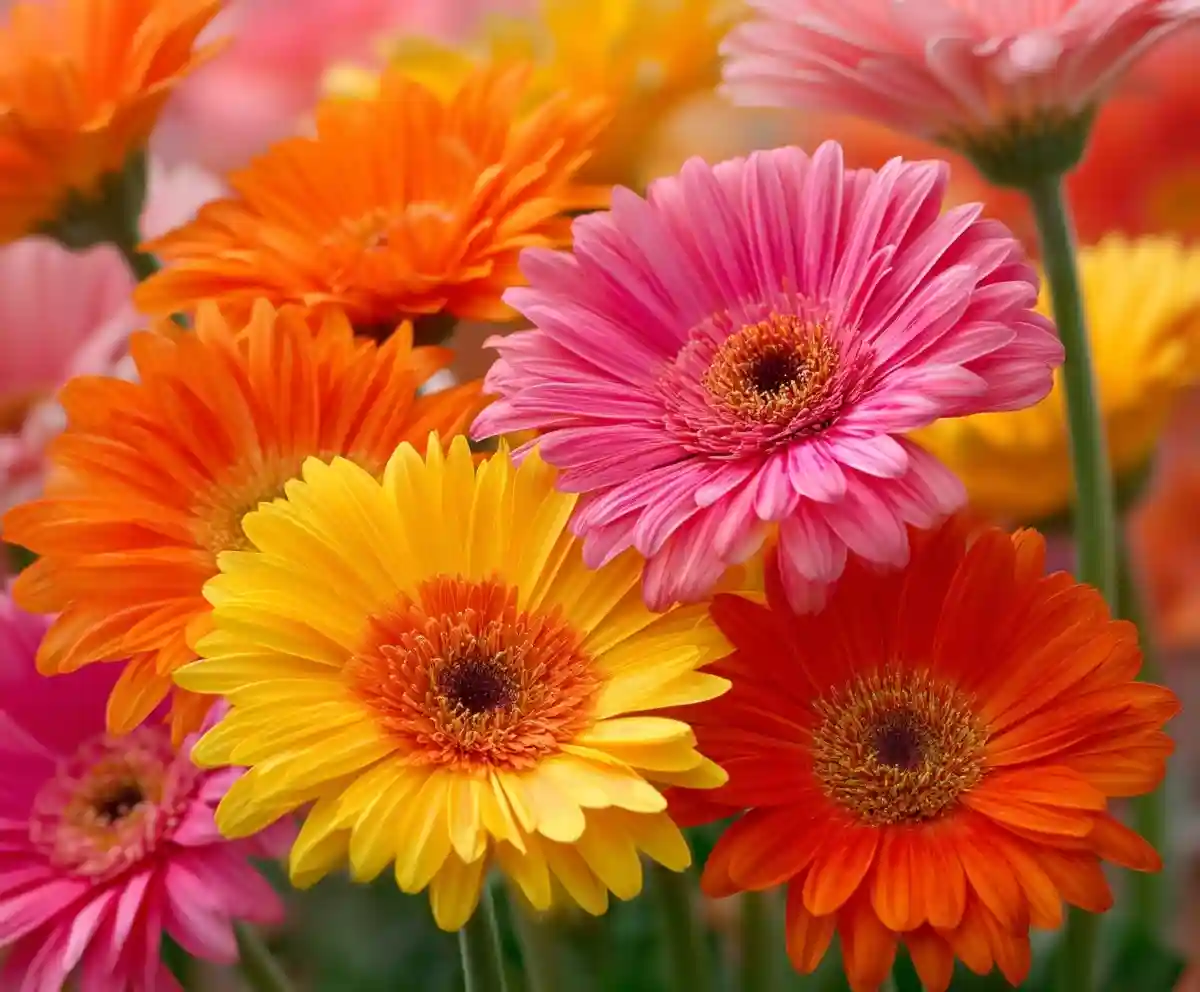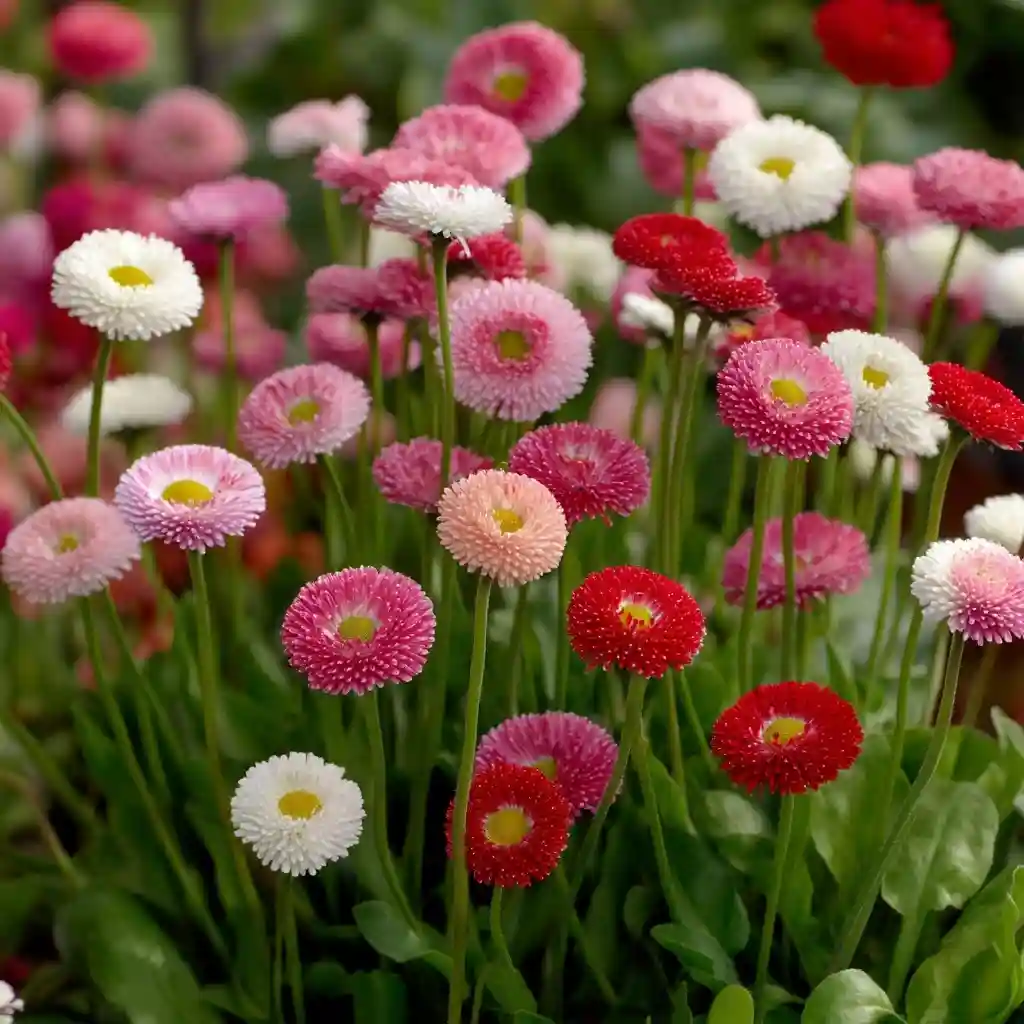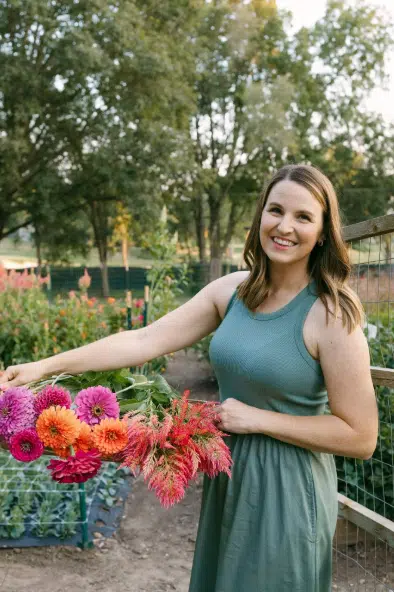Daisies bring a timeless charm to the garden, beloved for their cheerful blooms and versatility. As members of the Asteraceae family, they range from delicate English daisies to bold Gerbera varieties, offering endless color and form. While some daisies are low-maintenance and pollinator-friendly, others—like the Oxeye and English Daisy—can spread aggressively in some regions. It’s always wise to check local regulations or extension resources before planting. Whether you’re aiming to soften borders with Shasta daisies or brighten containers with African daisies, understanding the range helps you choose with confidence.
A Quick Warning About Daisies
While daisies are loved for their beauty and resilience, a few varieties can spread quickly and overwhelm garden spaces. For example, Oxeye Daisy (Leucanthemum vulgare) and English Daisy (Bellis perennis) are considered invasive in certain areas of North America. Before planting, it’s best to check with your local extension office or native plant society to confirm which types are safe and suitable for your region. Choosing wisely not only protects your garden’s balance but also supports the local ecosystem.
Types of Daisies to Grow in Your Garden
Table of Contents
1. English Daisy
Compact and charming, English daisies produce small white or pink blooms with bright yellow centers. Often used as groundcover or edging plants, they add a soft, meadow-like look to lawns and cottage gardens. In some regions, they reseed freely and may become invasive.
2. Gerbera Daisy
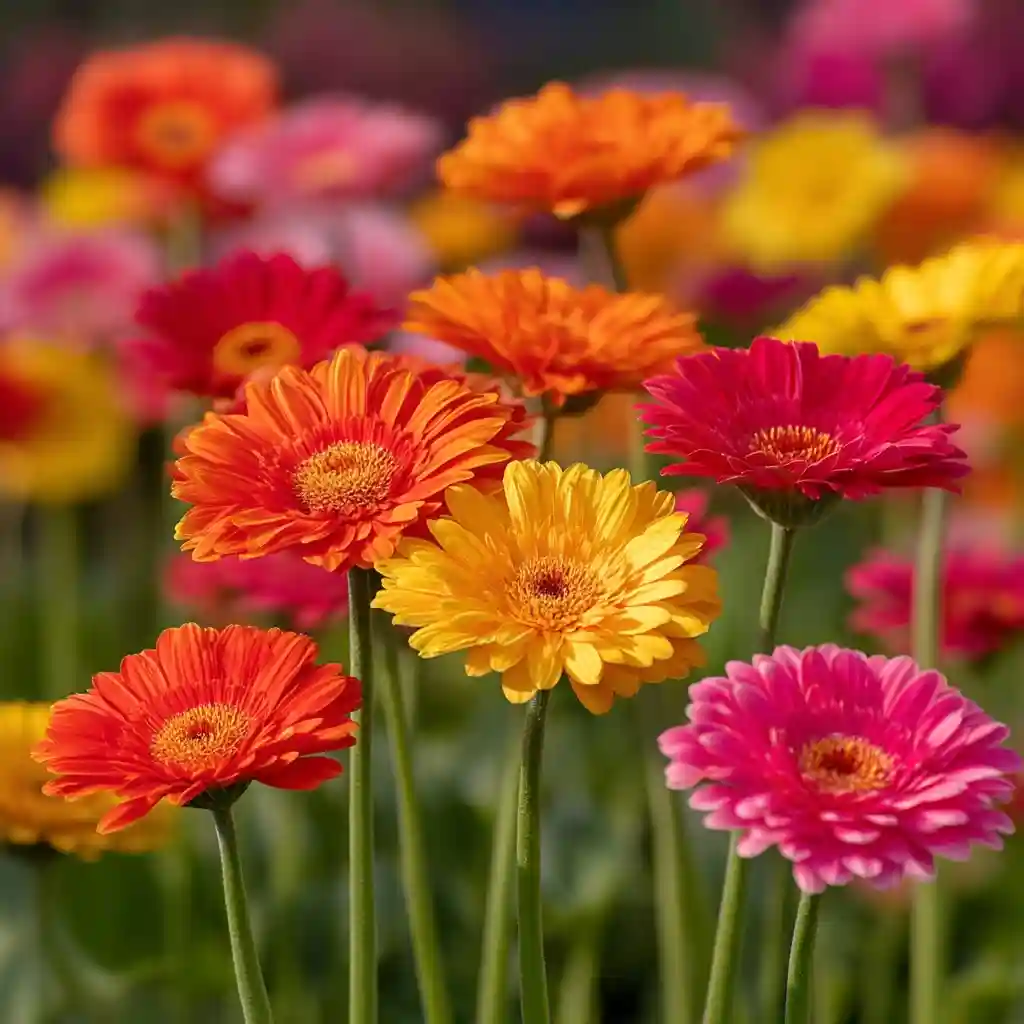
Known for their bold, colorful blooms, Gerbera daisies are popular in garden beds and as cut flowers. Their large daisy-like heads come in vibrant reds, oranges, yellows, and pinks, making them a cheerful choice for both outdoor landscapes and indoor arrangements.
3. Marguerite Daisy

Native to the Canary Islands, Marguerite daisies thrive in warm, sunny climates. Their white or yellow flowers bloom abundantly, creating a lively display in borders or containers. They are tender perennials in frost-free zones but often grown as annuals elsewhere.
4. Oxeye Daisy
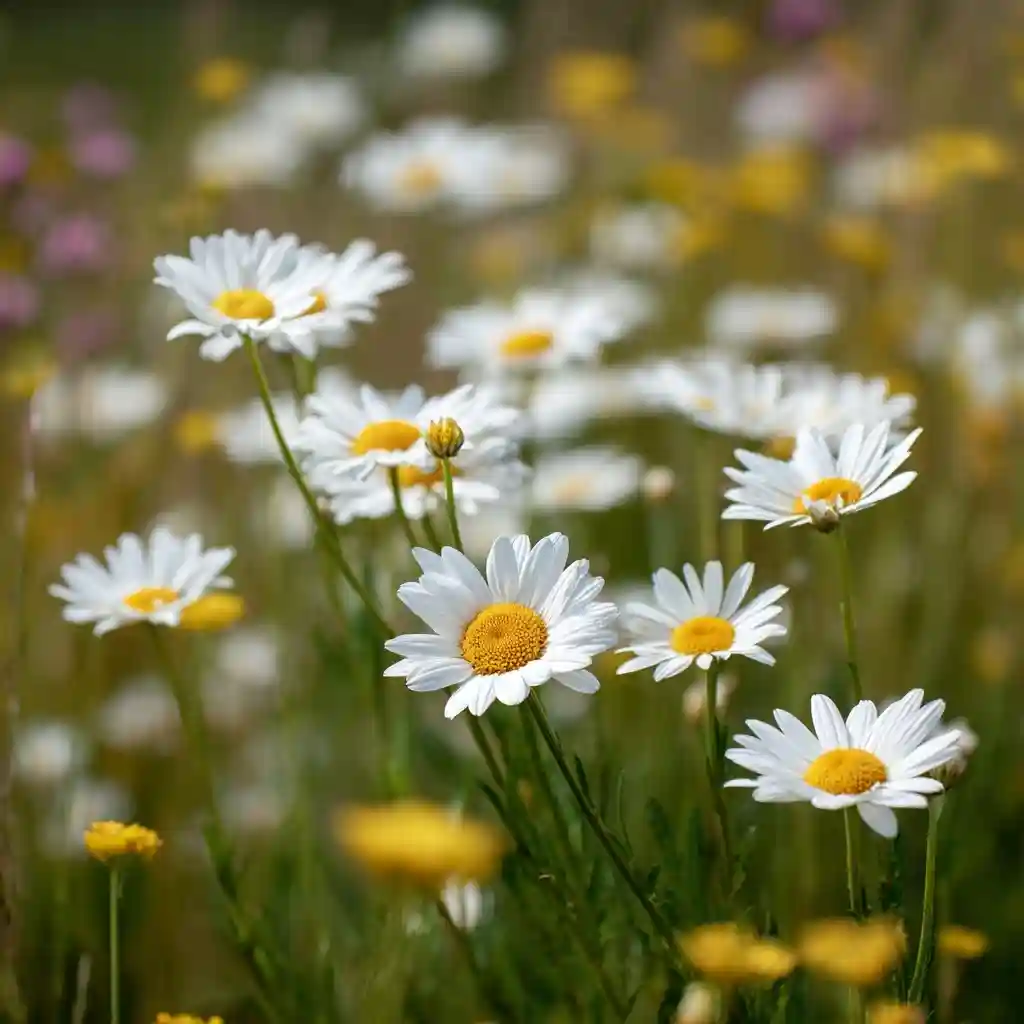
Tall and hardy, Oxeye daisies feature classic white petals with golden centers. Though attractive, they spread rapidly and are considered invasive in many areas. Gardeners should plant them cautiously, or opt for well-behaved daisy alternatives to avoid crowding out native species.
5. Painted Daisy
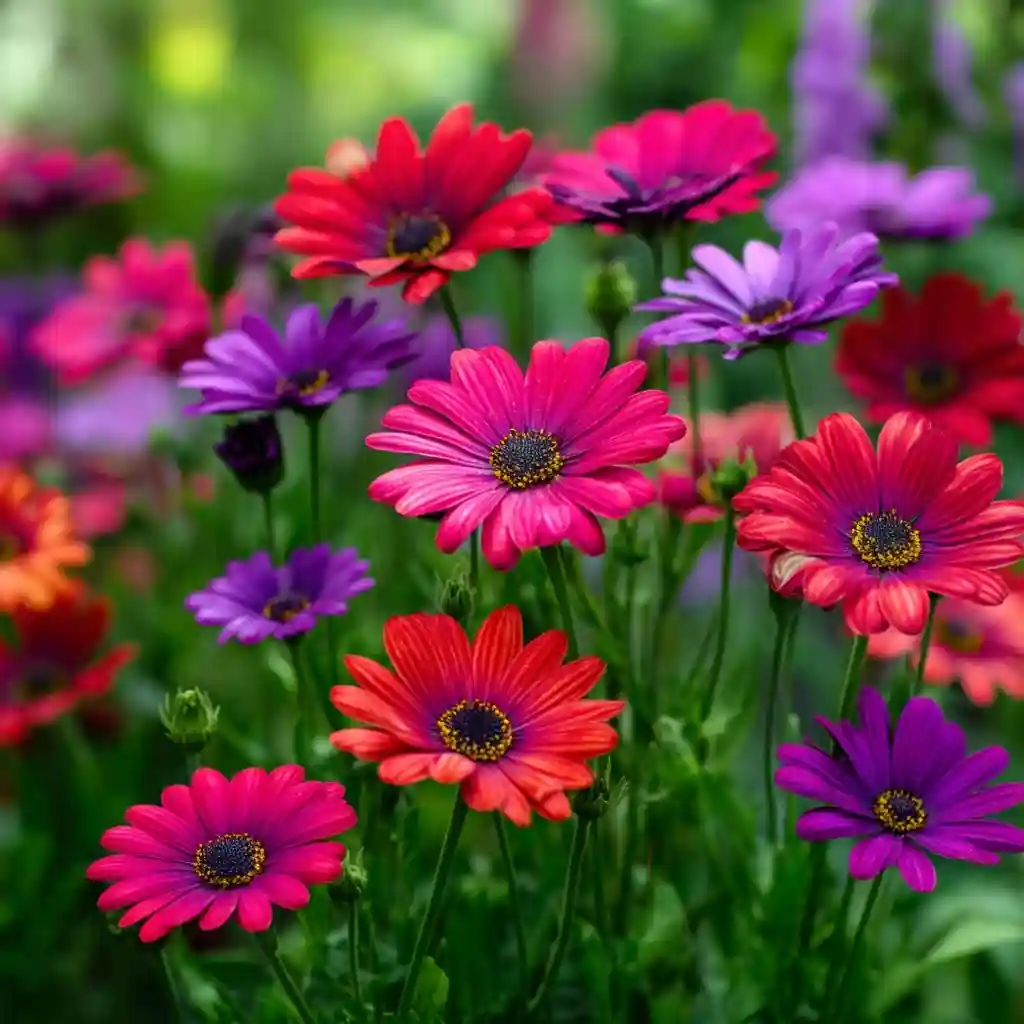
Painted daisies stand out with their vibrant, almost “painted” petals in shades of pink, red, and purple. They not only brighten flower beds but also deter pests, as their foliage contains natural insect-repelling compounds. Ideal for gardeners seeking both beauty and function.
6. Shasta Daisy
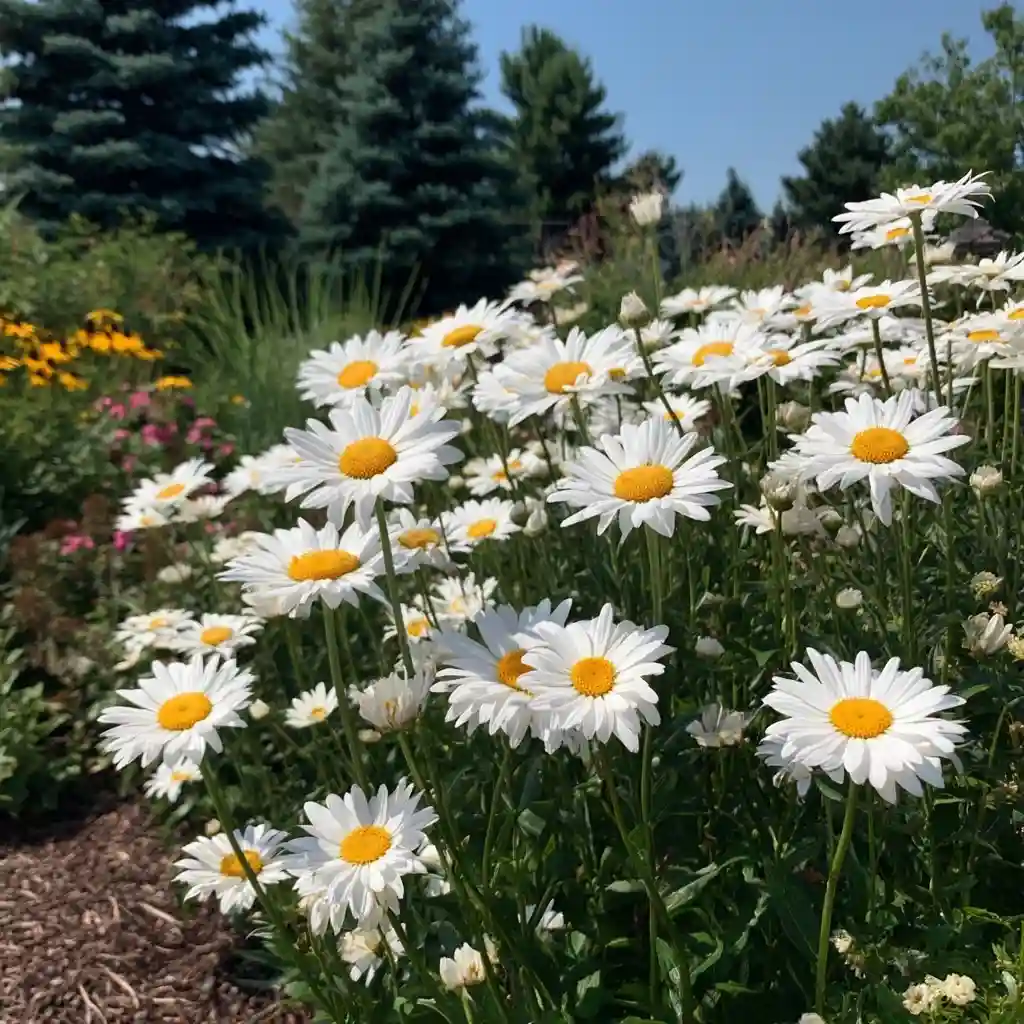
One of the most popular perennial daisies, Shastas are known for their crisp white petals and long bloom season. They thrive in sunny spots with well-drained soil and are easy to care for, making them a staple in classic cottage and perennial gardens.
7. Swan River Daisy
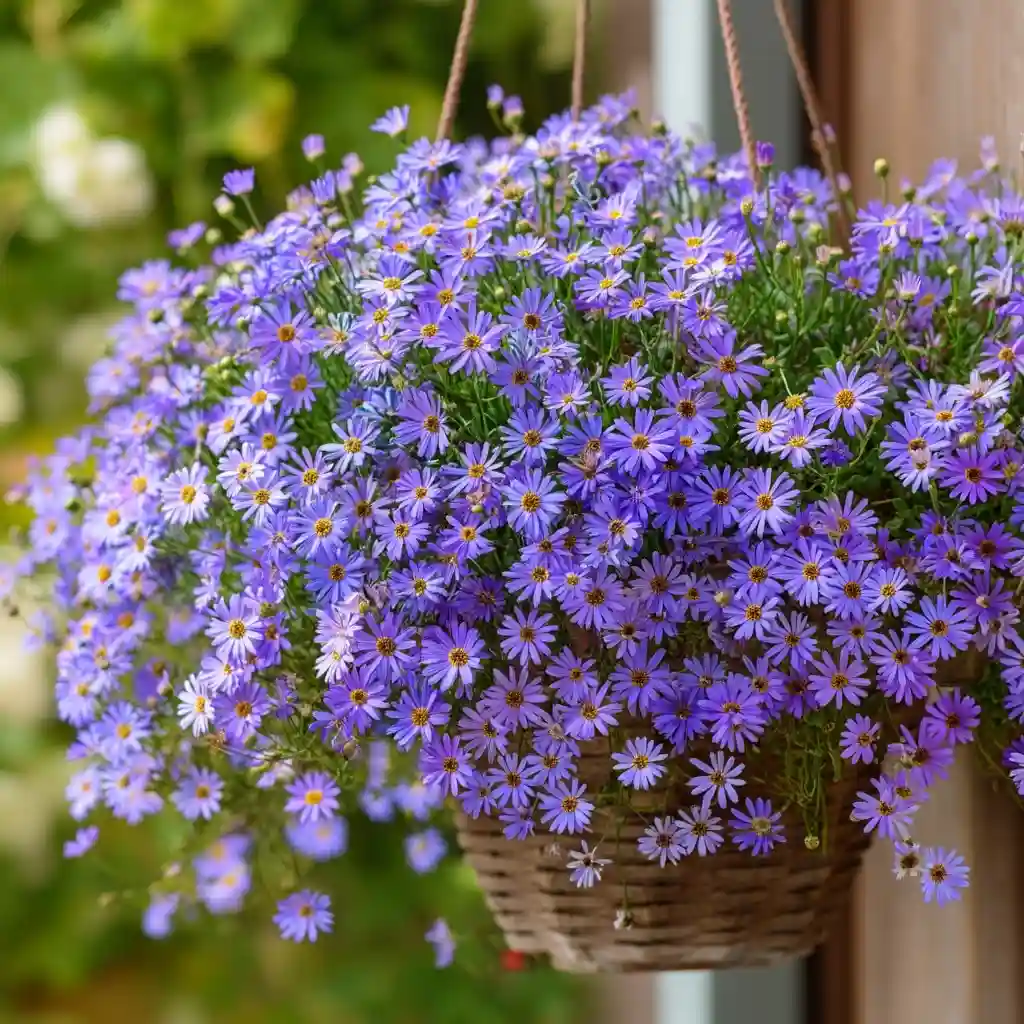
Native to Australia, Swan River daisies bring a delicate touch with small blue, purple, or white blooms. They are ideal for borders, hanging baskets, and rock gardens. Blooming from summer into fall, they thrive in sunny locations and attract butterflies.
8. Gloriosa Daisy
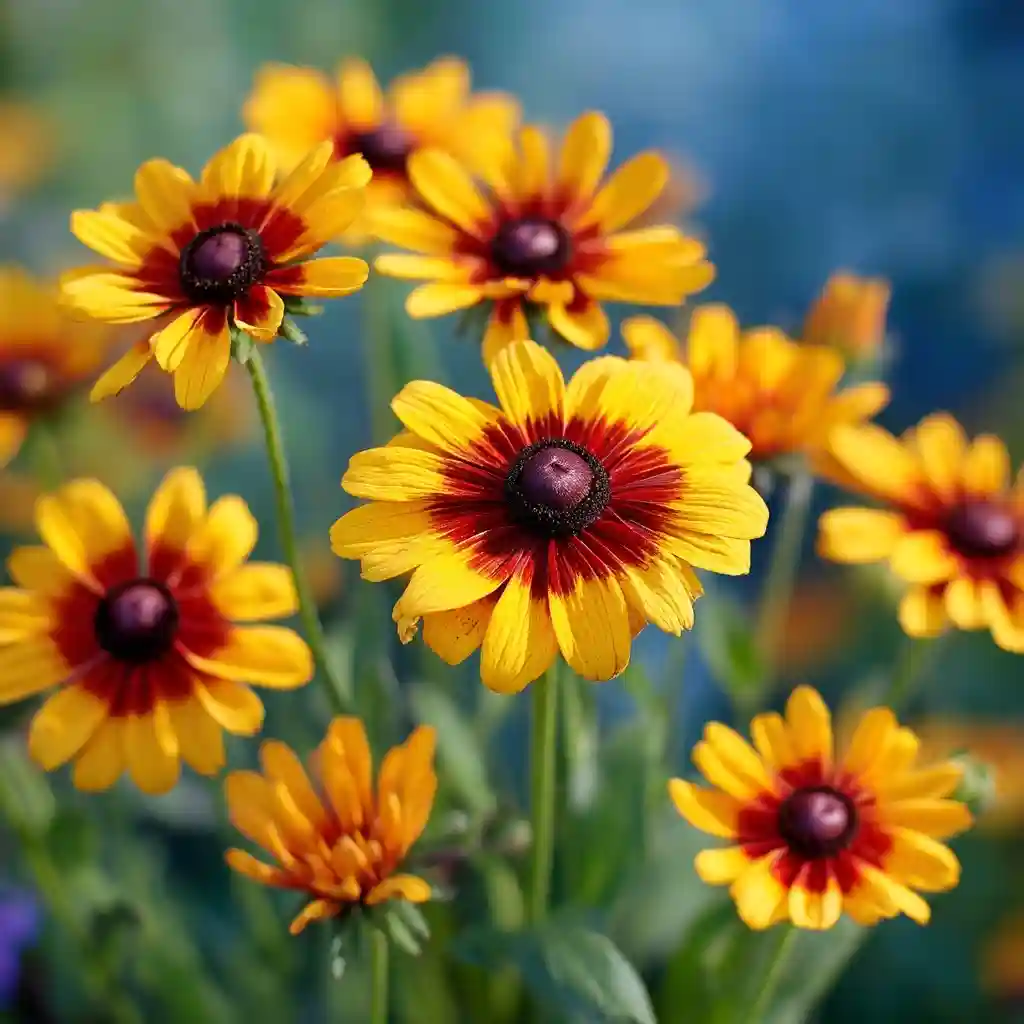
Often grown as a variety of Rudbeckia, Gloriosa daisies feature large golden petals with dark brown centers. These hardy flowers bloom in midsummer and make excellent cut flowers. Their bold color makes them a favorite for adding warmth to garden beds.
9. Golden Marguerite Daisy
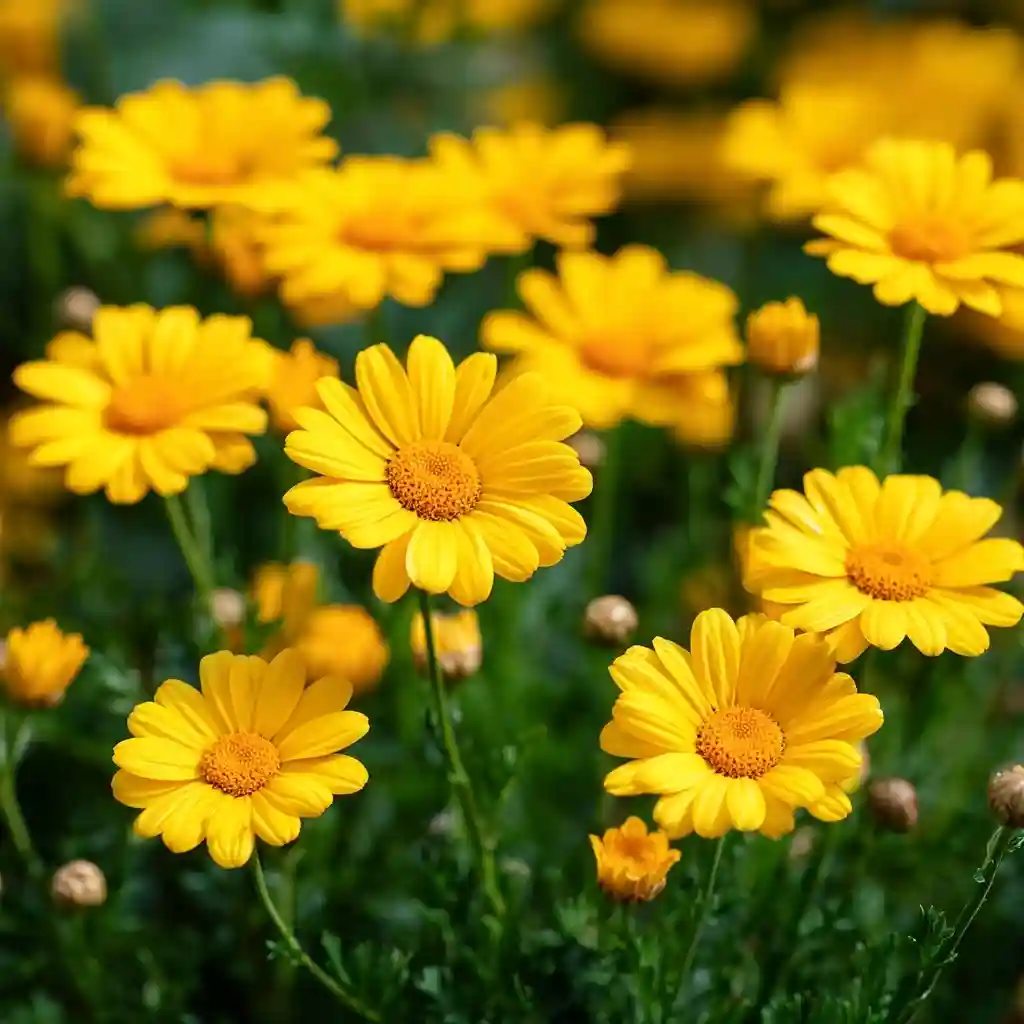
Golden Marguerite daisies brighten any garden with masses of daisy-like yellow flowers. Known for their long bloom period, they flourish in full sun and well-drained soil. Their cheerful blooms often attract bees and butterflies, adding both color and pollinator value.
10. Coneflower Daisy
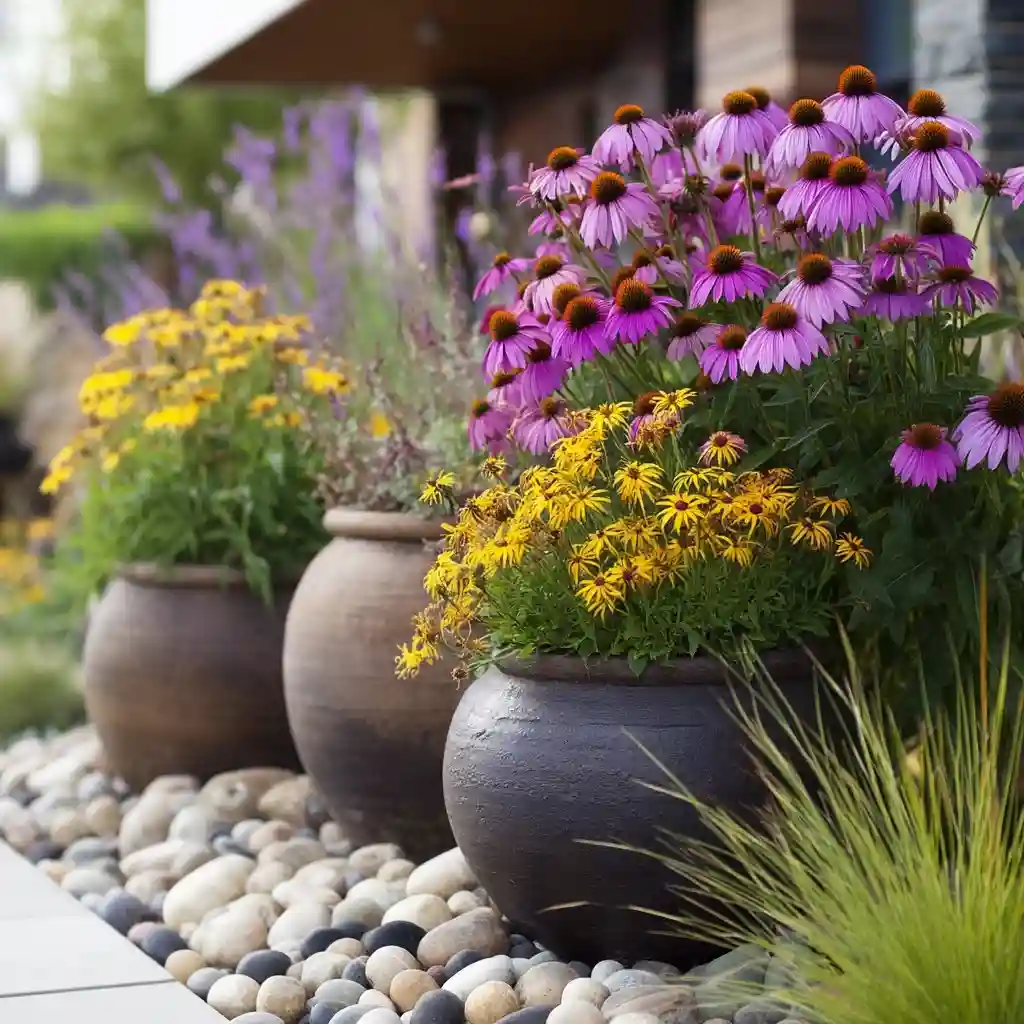
Technically a type of Echinacea, coneflower daisies are hardy perennials valued for their daisy-like petals surrounding spiky central cones. They come in shades of pink, purple, and white. Drought-tolerant and resilient, they also provide seeds for birds in fall.
11. Cape Daisy (African Daisy)
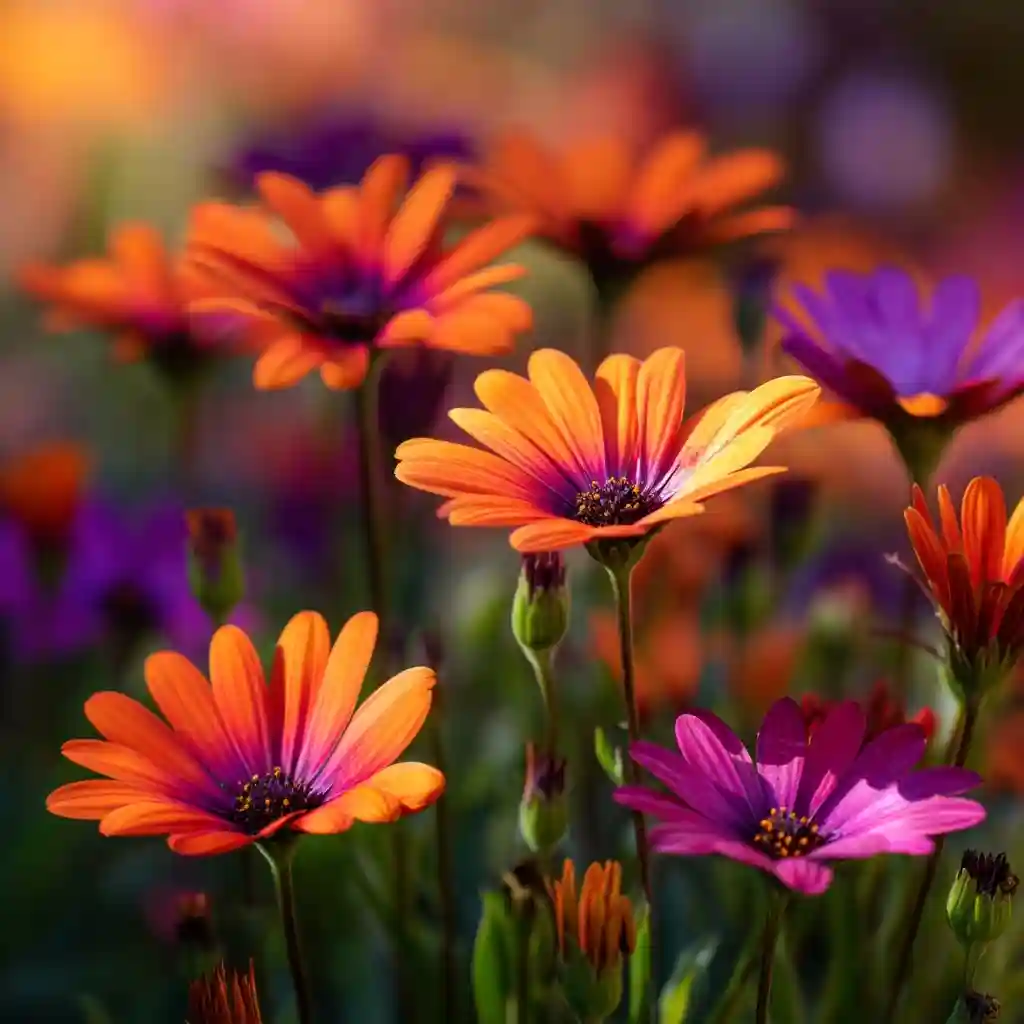
Cape daisies, also called African daisies, stand out with vibrant blooms that often feature contrasting centers. Colors range from white and yellow to deep purples and oranges. Thriving in warm climates, they bring a tropical flair to containers and sunny beds.
12. Chrysanthemum
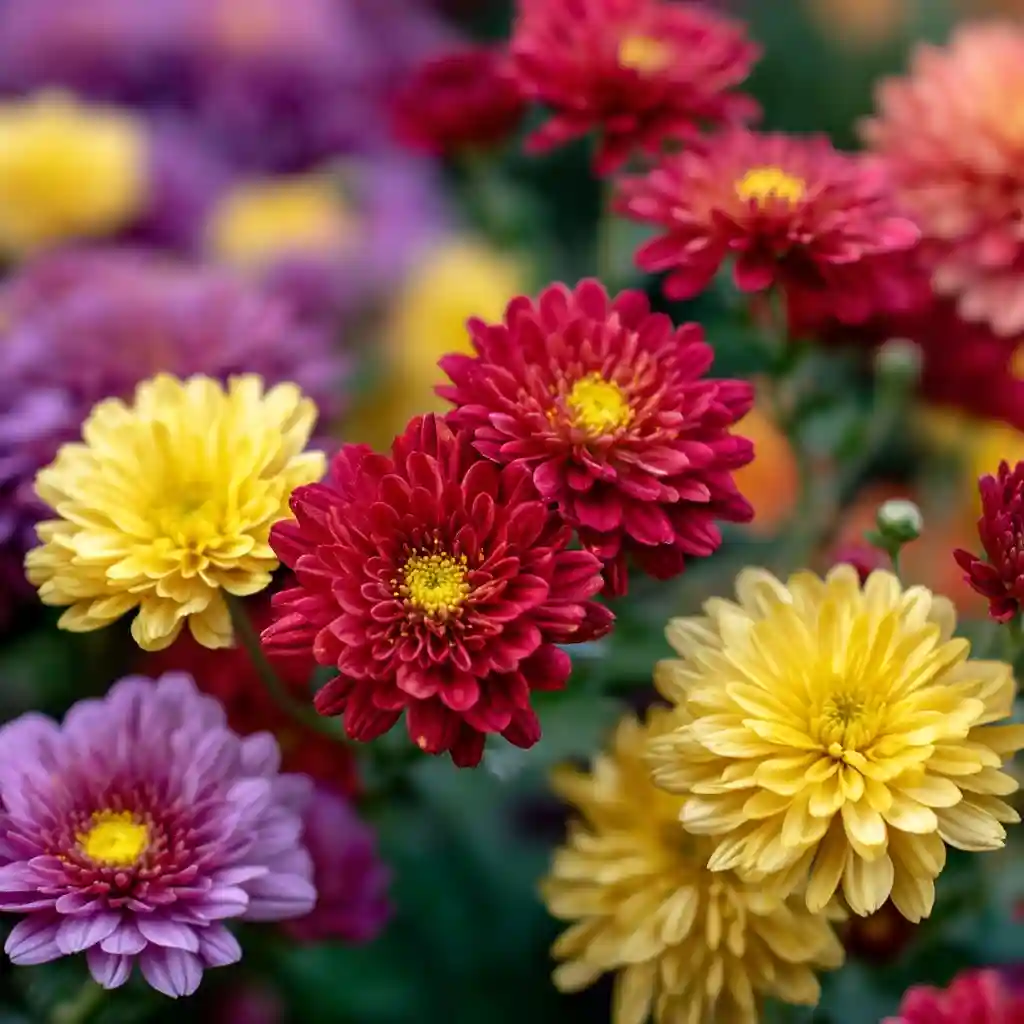
Chrysanthemums, often simply called “mums,” are fall favorites with daisy-like flowers in many colors. They are hardy perennials in some climates, making them versatile choices for extending garden interest late into the year. Their blooms are also highly popular for cut arrangements.
13. Gaillardia Daisy (Blanket Flower)

Gaillardia daisies, also known as blanket flowers, display fiery red, orange, and yellow petals that resemble a Southwestern sunset. These hardy perennials thrive in poor, dry soils, making them a great choice for low-maintenance gardens. They bloom all summer long, attracting bees and butterflies.
14. Aster Daisy
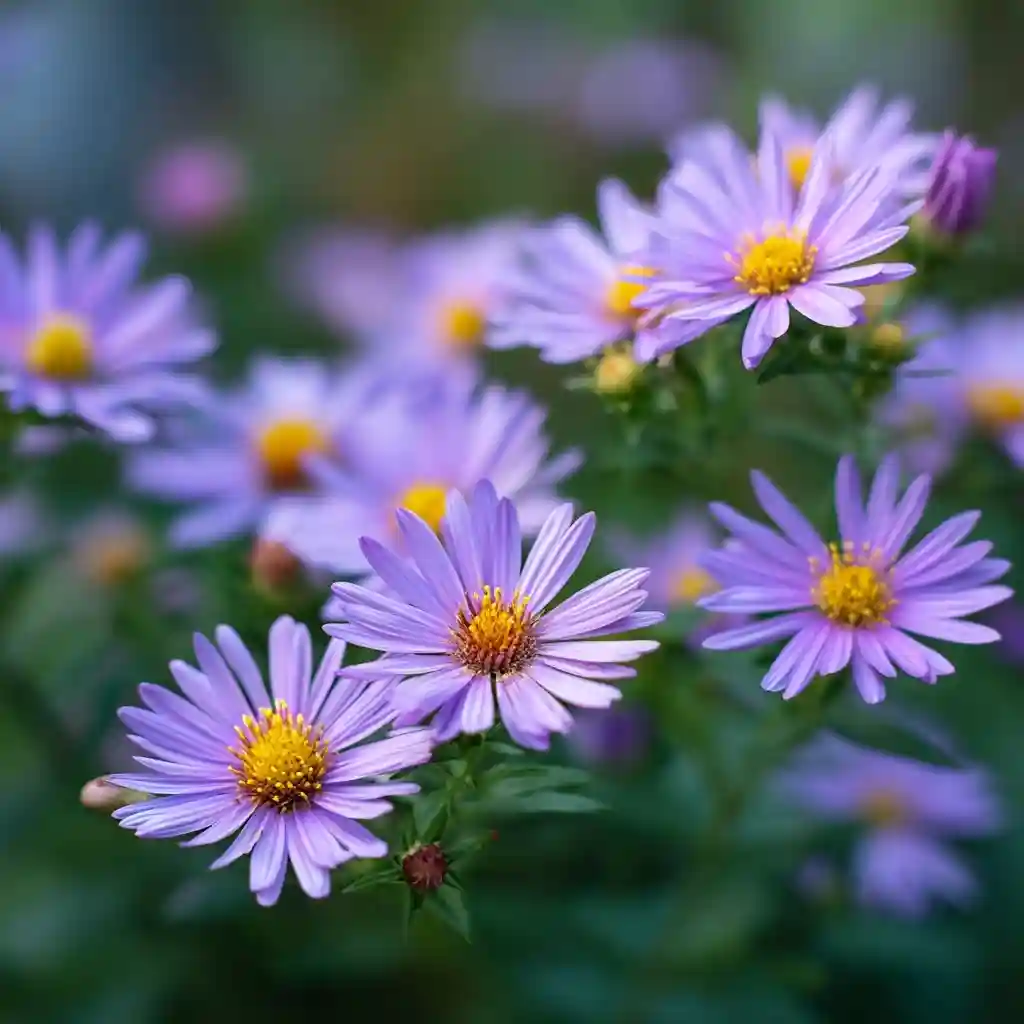
Aster daisies bloom in late summer to fall, offering shades of purple, pink, blue, and white. Their daisy-like flowers create an important late-season nectar source for pollinators. Compact varieties are ideal for borders, while taller types suit wildflower gardens.
15. Blue Daisy
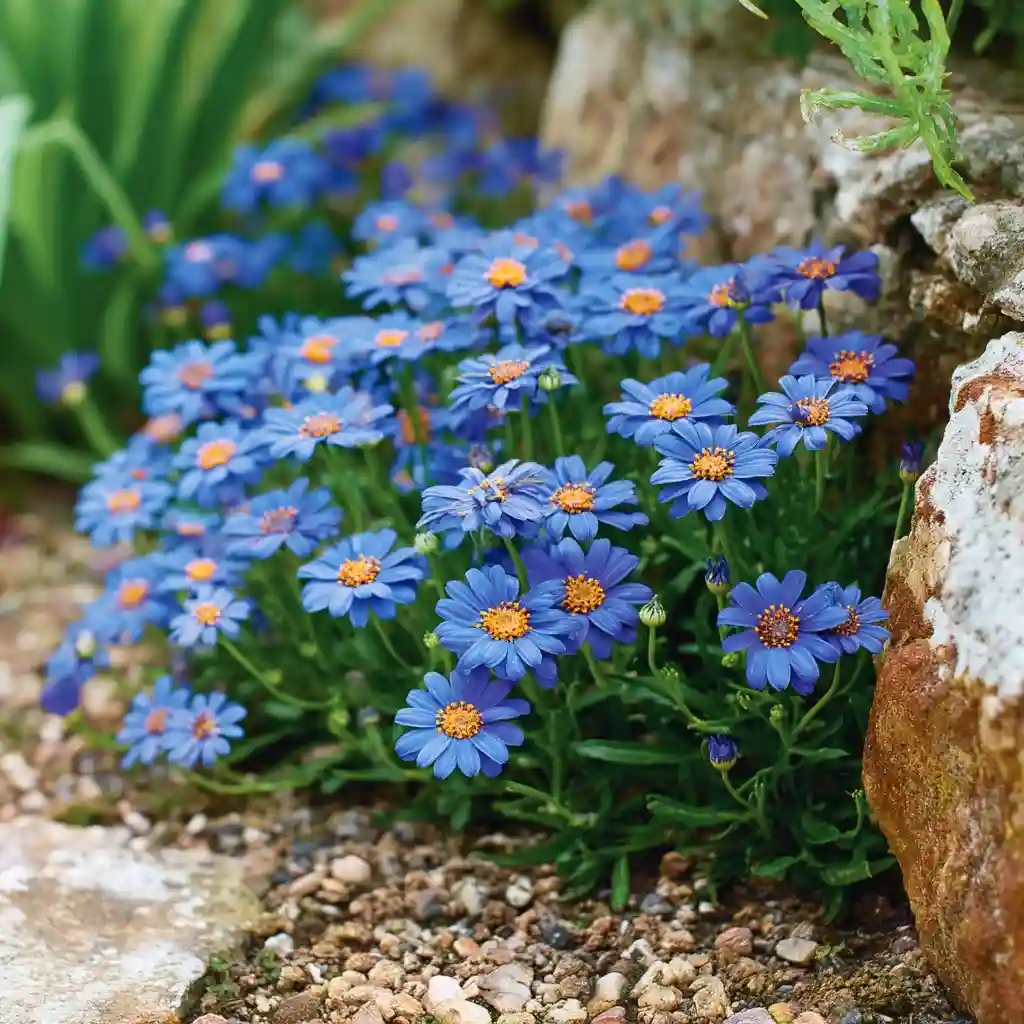
Also known as Felicia daisy, the Blue daisy is native to South Africa. Its sky-blue petals with bright yellow centers bring a refreshing color to garden beds and containers. Best in full sun, these tender perennials are often grown as annuals in cooler zones.
16. Chocolate Daisy
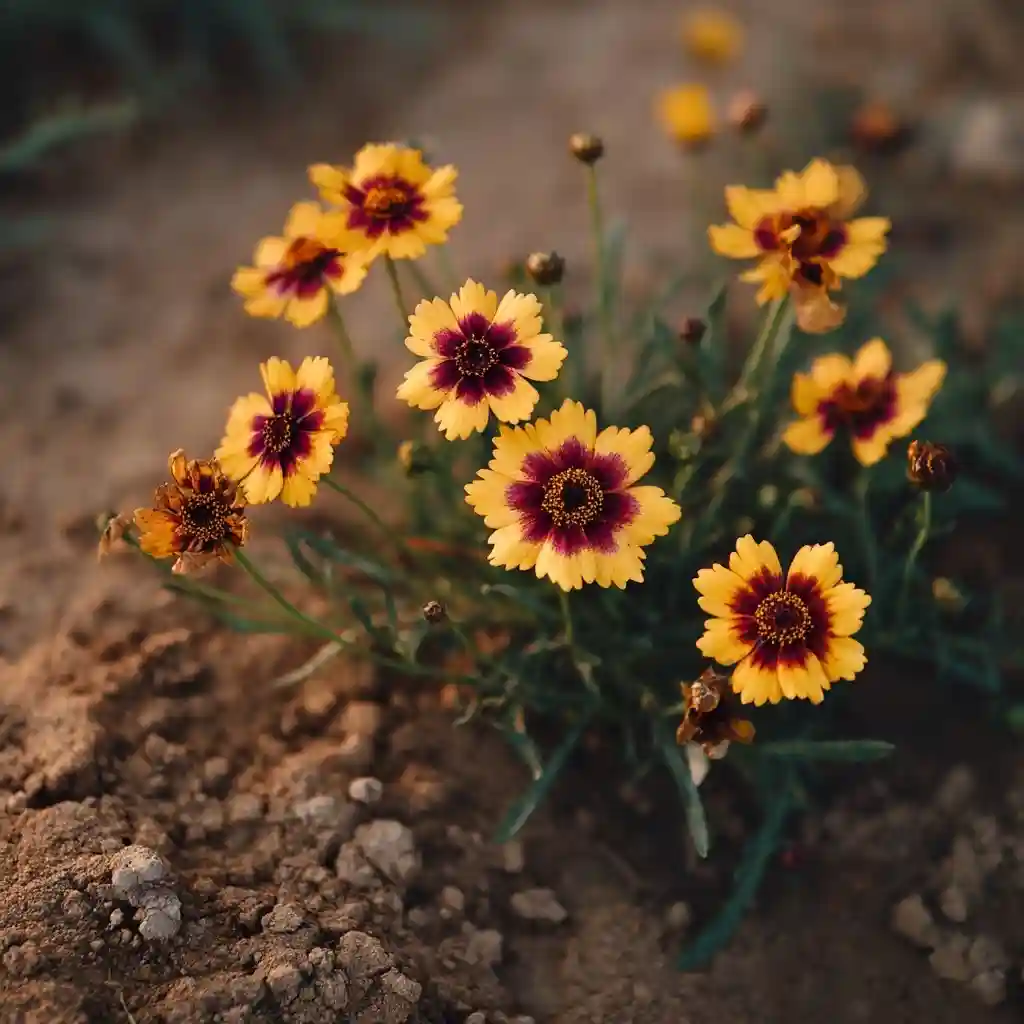
Chocolate daisies are unique for their cocoa-scented blooms. With yellow petals and maroon centers, they add both fragrance and charm to xeriscape gardens. Native to the southwestern United States, they tolerate dry soils and bloom throughout summer mornings.
17. Desert Star Daisy
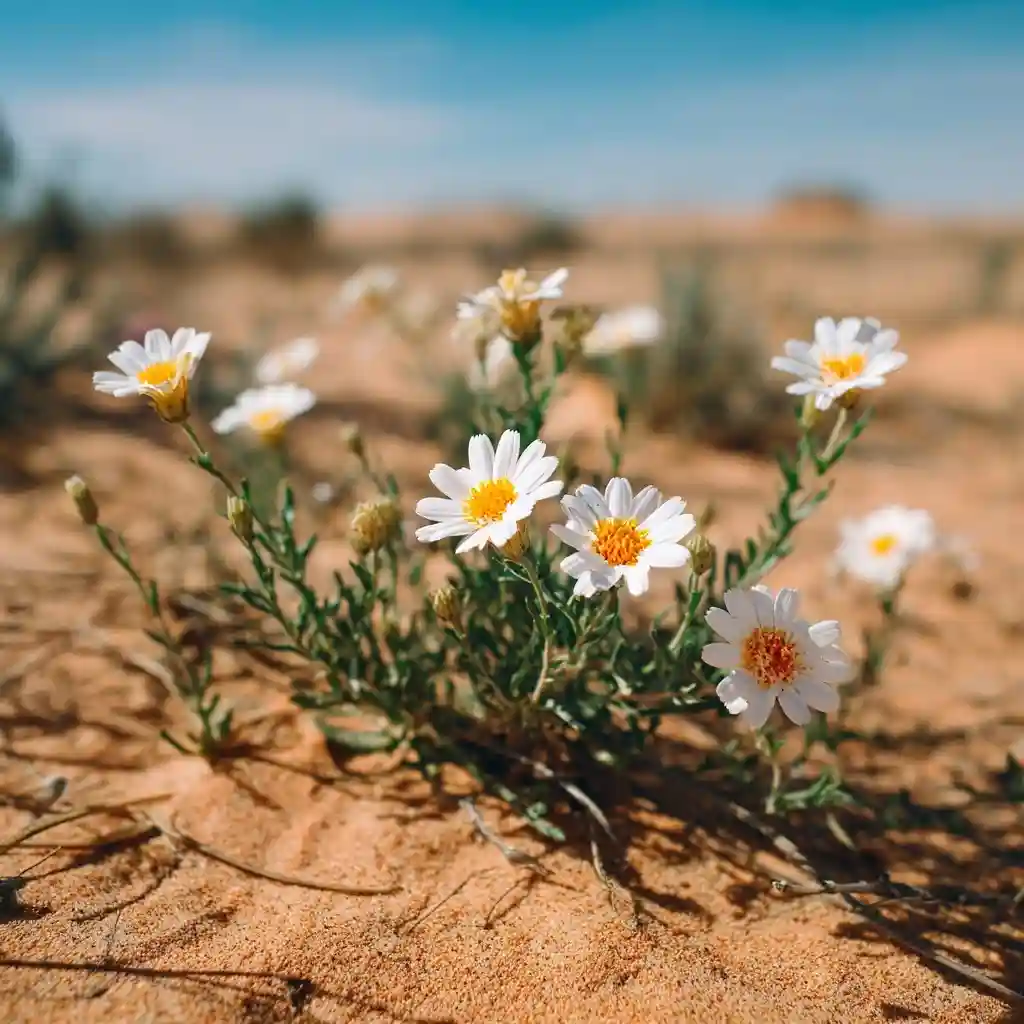
A petite wildflower, the Desert Star daisy thrives in arid environments. Its small white petals and bright yellow center form star-like blooms that dot sandy soils. Perfect for rock gardens or desert landscaping, it adds delicate beauty with minimal care.
18. Euryops Daisy (Bush Daisy)
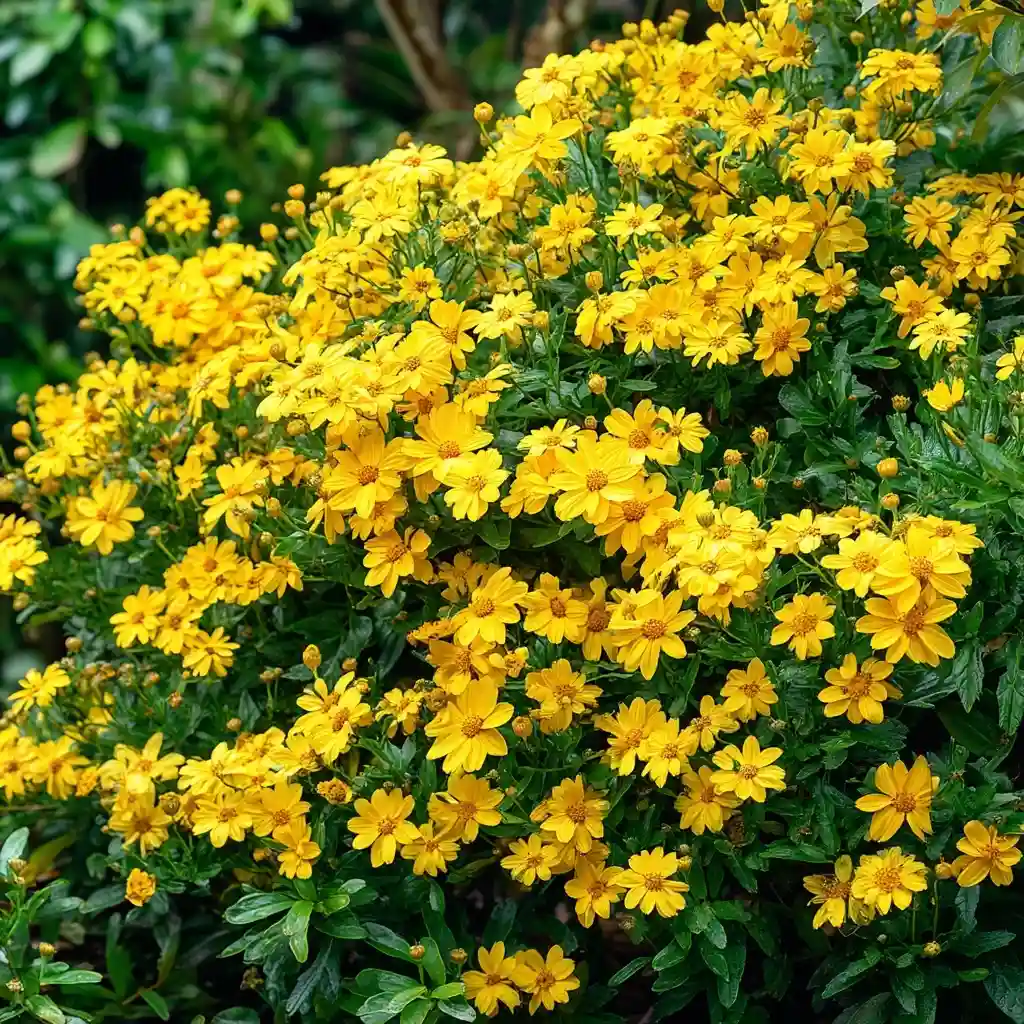
Euryops daisies are shrubby perennials that produce masses of golden-yellow flowers year-round in warm climates. With fine, fern-like foliage, they are well-suited for coastal gardens and thrive in full sun. Their long blooming season makes them excellent for continuous color.
19. Curly Leaf Daisy
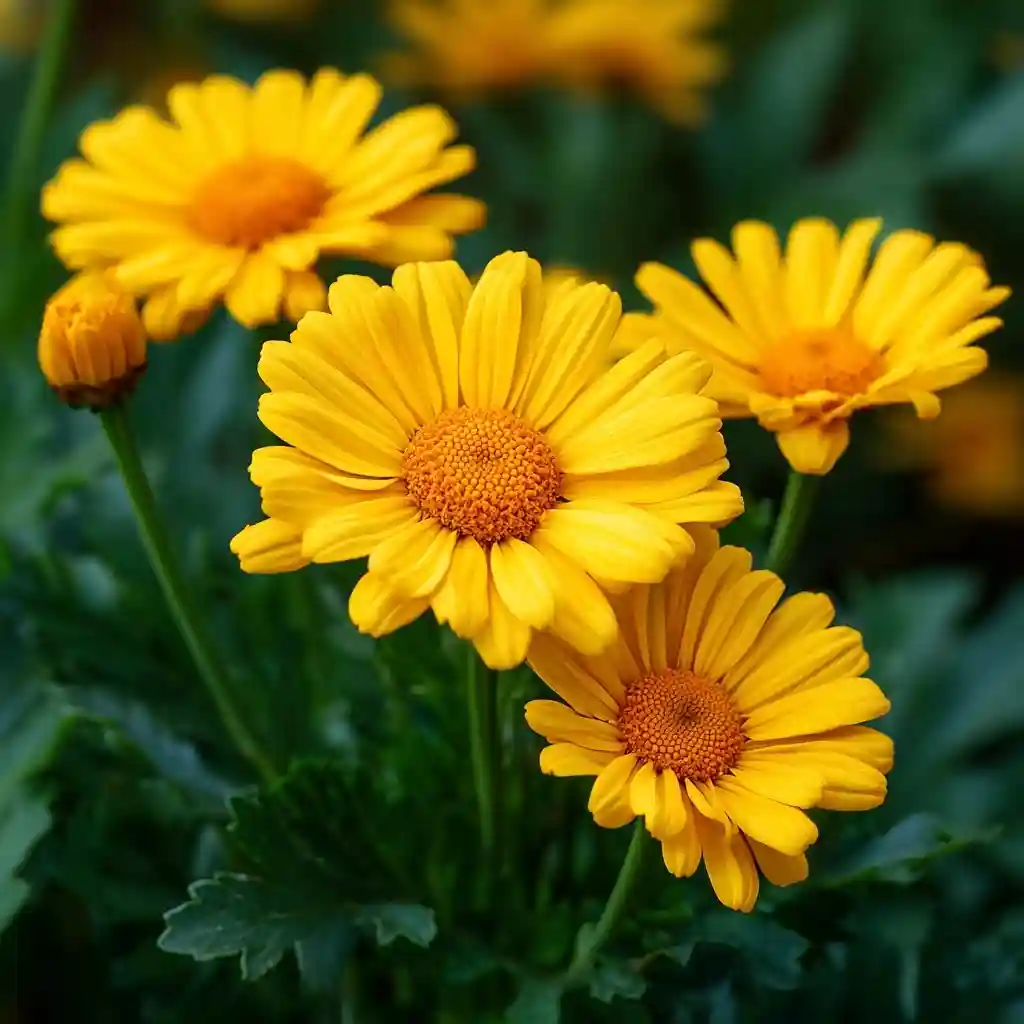
Curly Leaf daisies are known for their finely divided, curled foliage that adds texture even when not in bloom. Their daisy-like flowers are typically yellow and bloom over a long season. These plants tolerate coastal conditions well and are often used in low-maintenance landscapes.
20. Dahlberg Daisy
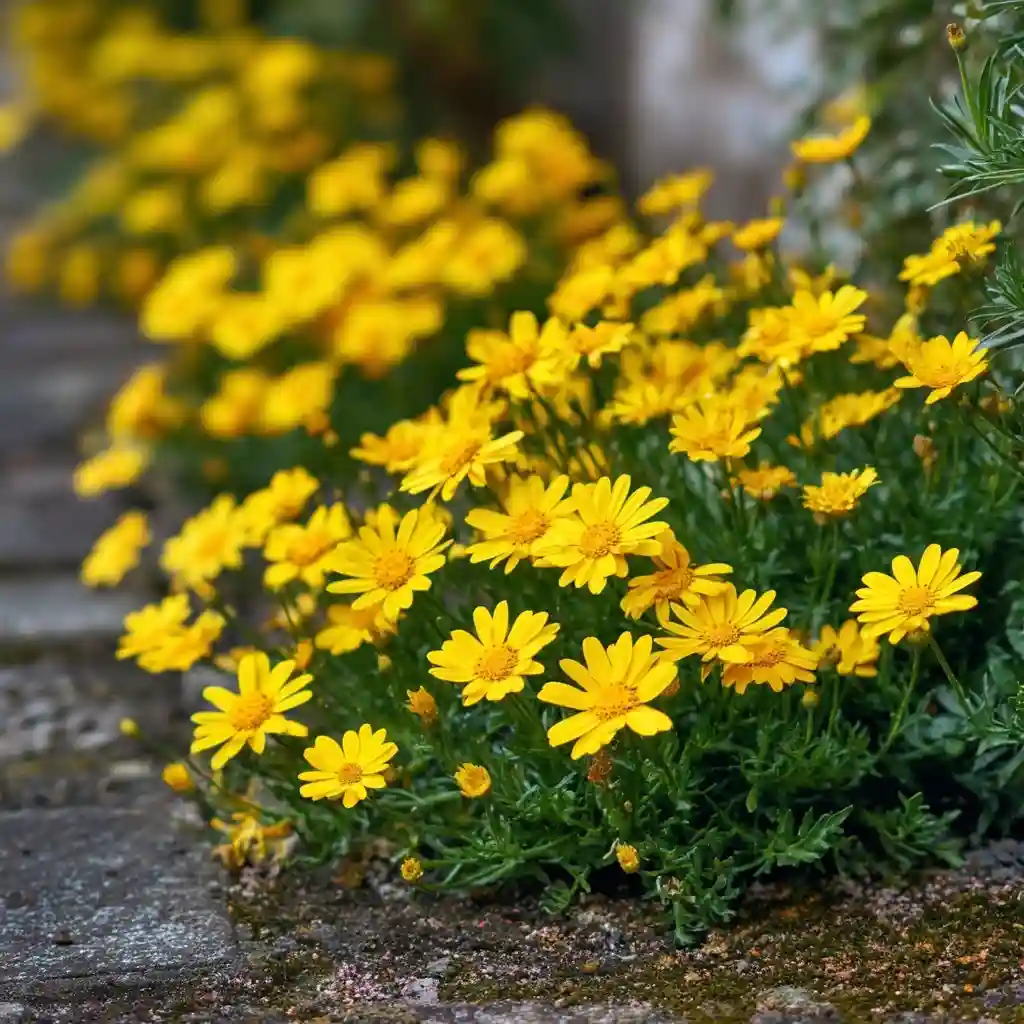
Dahlberg daisies are petite annuals with bright yellow blooms and feathery foliage. Despite their delicate appearance, they are drought-tolerant and ideal for hot, dry spots. Their low, spreading habit makes them a good choice for edging or filling in gaps in rock gardens.
21. Florist’s Daisy
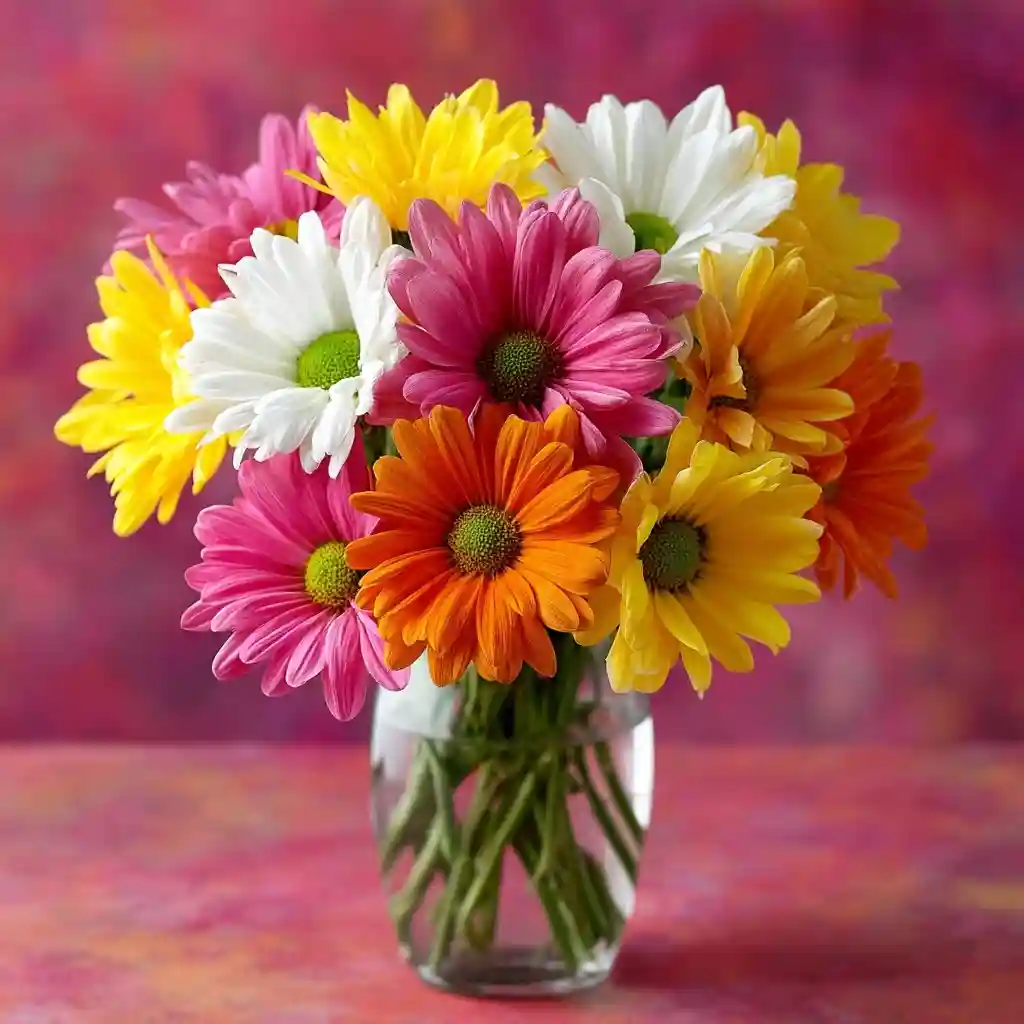
A close relative of chrysanthemums, Florist’s daisies are commonly used in bouquets and floral arrangements. They offer a wide range of colors and bloom shapes, from classic daisy forms to more decorative petals. Gardeners enjoy them for their long-lasting blooms and versatility.
22. Crown Daisy
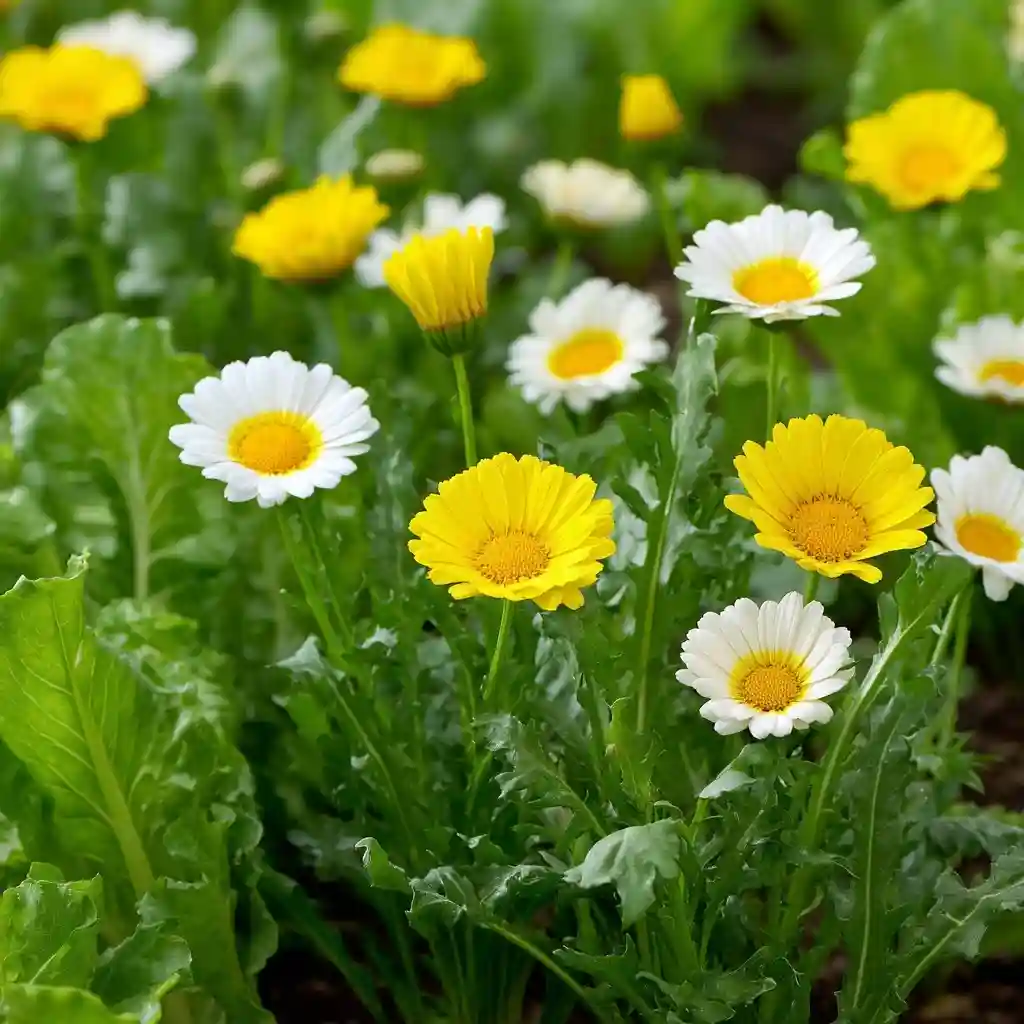
Crown daisies are leafy annuals with cheerful yellow or white flowers. In addition to their ornamental value, their tender leaves are used in Asian cuisine. They grow quickly, making them an excellent seasonal choice for vegetable and flower gardens alike.
23. Damianita Daisy
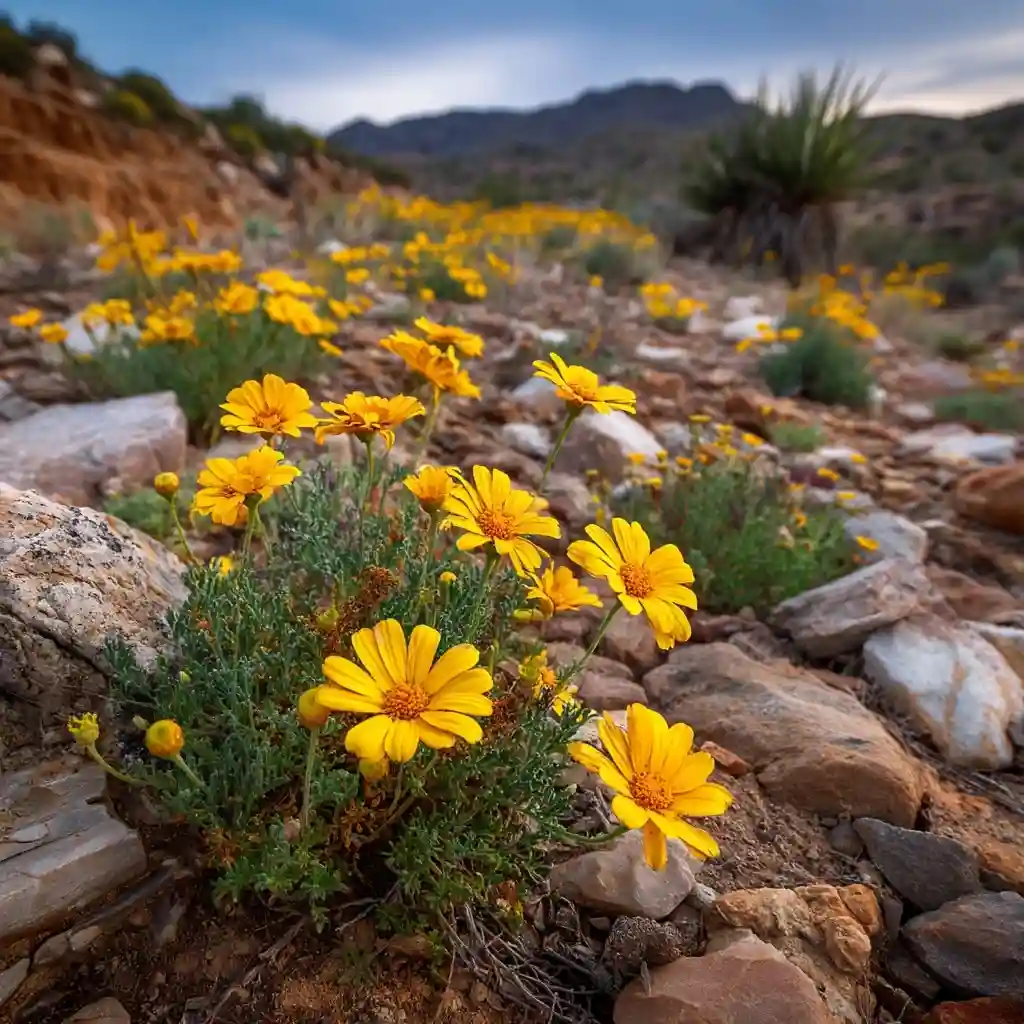
Native to Texas and Mexico, Damianita daisies thrive in hot, dry climates. They form compact mounds covered in golden-yellow blooms. Extremely low-maintenance, they are perfect for xeriscaping and attract pollinators while resisting deer and drought.
24. Livingstone Daisy
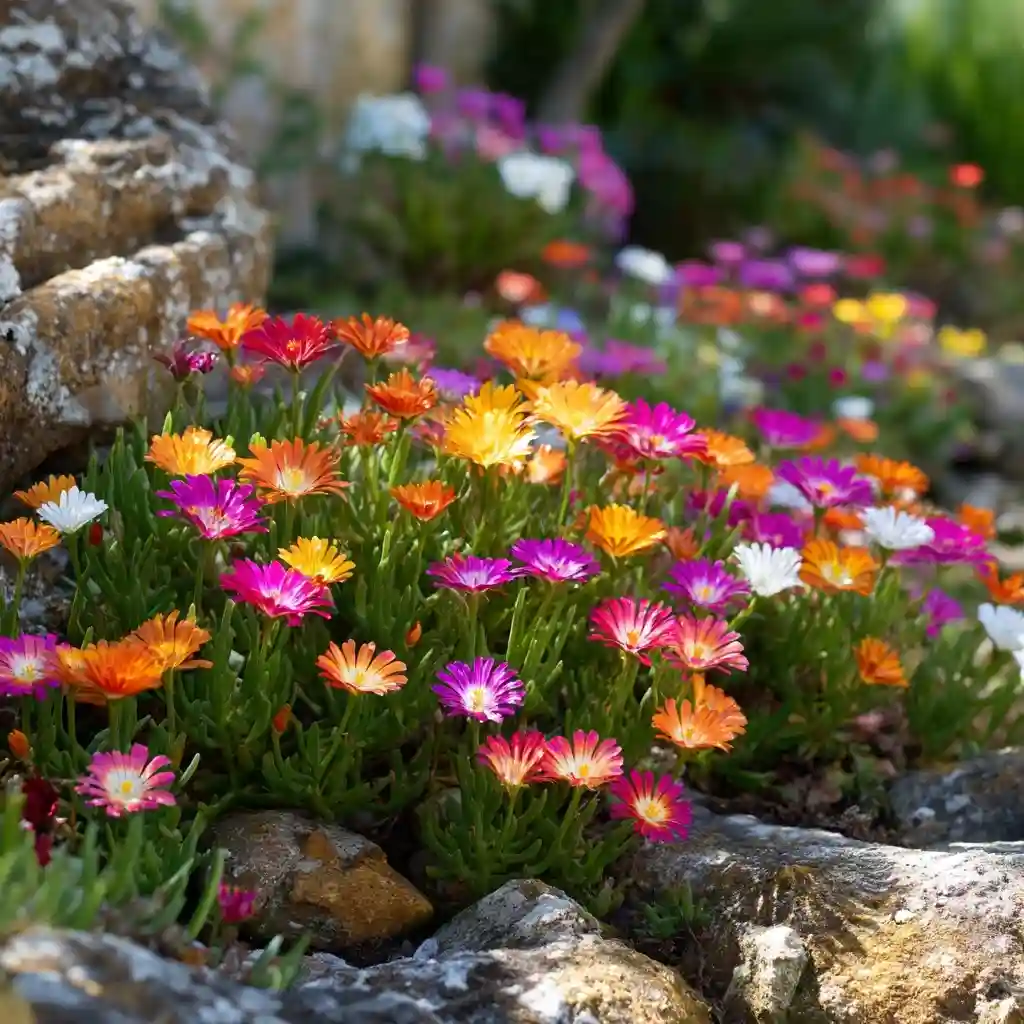
Also known as Ice Plant, the Livingstone daisy produces dazzling, jewel-toned flowers that open in full sun. Their fleshy leaves help retain water, making them excellent for dry conditions. These daisies create carpets of color, ideal for borders, rockeries, or containers.
25. Blue-eyed Daisy
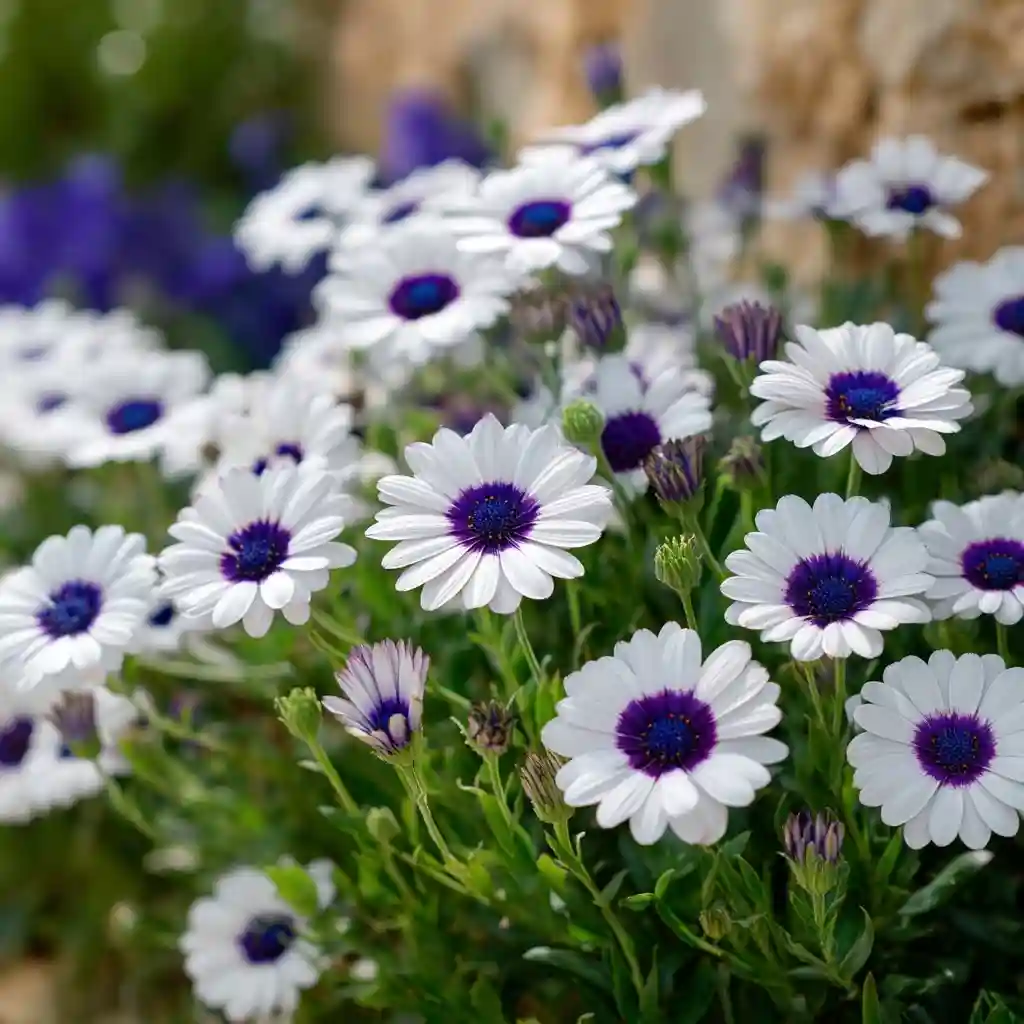
Blue-eyed daisies stand out with their white petals surrounding a striking blue or purple center. Native to South Africa, they thrive in sunny conditions and are often grown as annuals in cooler climates. Their vibrant contrast makes them excellent for adding brightness to mixed borders and containers.
26. Butter Daisy
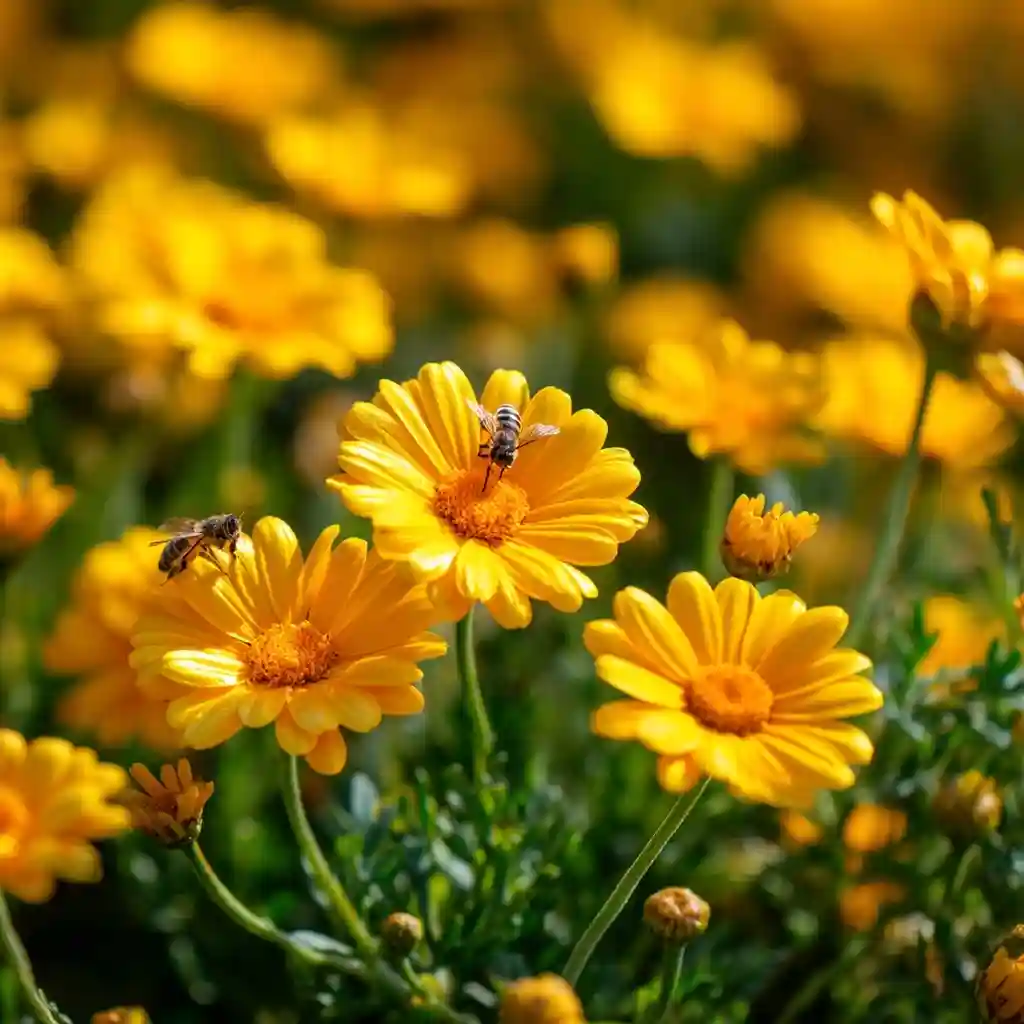
Also called Melampodium, the Butter daisy is a cheerful, easy-to-grow annual that blooms nonstop through summer. Its small, golden-yellow flowers sit atop lush green foliage, creating a long-lasting display. Butter daisies tolerate heat and humidity, making them perfect for warm-season gardens.
Tips for Growing Daisies
- Sunlight: Most daisies need at least 6 hours of direct sun daily. Full sun encourages stronger stems and more abundant blooms.
- Soil: Plant daisies in well-draining soil. A mix enriched with compost helps improve fertility and prevents root rot.
- Watering: Water deeply once or twice a week, depending on climate. Avoid overwatering, as soggy soil weakens plants.
- Mulching: Apply a thin layer of mulch around the base to retain moisture, control weeds, and regulate soil temperature.
- Pruning & Deadheading: Remove spent blooms to encourage continuous flowering. Trim back plants in late fall or early spring to keep them healthy.
- Spacing: Give each plant enough room for air circulation to prevent fungal issues.
With these simple practices, daisies will thrive in garden beds, borders, or containers, rewarding you with long-lasting color.
Conclusion
Daisies are timeless garden favorites, offering everything from simple wildflower charm to bold, colorful displays. With so many varieties to choose from, there’s a daisy for every garden style—whether you want low-maintenance groundcovers, vibrant borders, or long-lasting cut flowers. By selecting the right type for your region and following basic care tips, you can enjoy months of cheerful blooms while supporting pollinators and brightening your outdoor space.
FAQs About Daisies
Are daisies perennials or annuals?
Both! Some daisies, like Shasta and Oxeye, are perennials that return year after year. Others, like Livingstone daisies and Dahlberg daisies, are usually grown as annuals.
How much sun do daisies need?
Most daisies prefer full sun, meaning 6–8 hours of direct light daily. Without enough sun, they may grow tall and weak with fewer blooms.
How long do daisies bloom?
Depending on the type, daisies can bloom from early summer into fall. Deadheading spent flowers helps extend the blooming season.
What is the easiest daisy to grow?
Shasta daisies are among the easiest. They’re hardy, low-maintenance, and bloom reliably, making them a favorite for beginners and experienced gardeners alike.
🌿 Love gardening inspiration? Follow me on Pinterest for bold plant ideas, tips, and seasonal color!
More Posts
